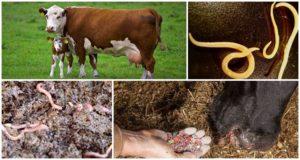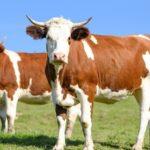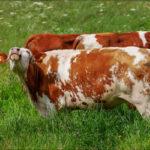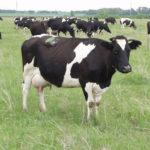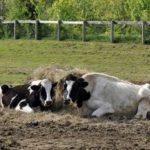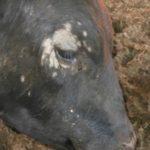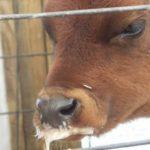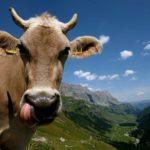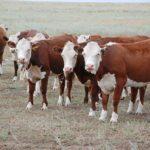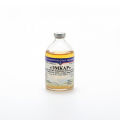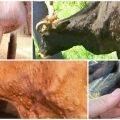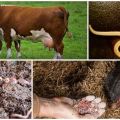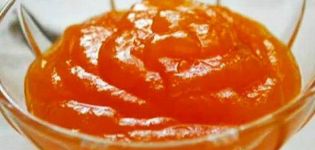The causative agent and symptoms of emphysematous carbuncle in cattle, treatment of emkar
Clostridium bacteria are dangerous microorganisms that survive in an oxygen-free environment. They cause the development of emphysematous carbuncle, or emkara, in cows. The disease is treated with antibiotics, but recovered animals remain carriers of pathogens. Livestock becomes infected through water, feed and manure from sick relatives. Emkar is one of the diseases that cause major damage to farms.
What is the disease
Emphysematous carbuncle is an infectious disease with a short incubation period. Symptoms appear 1-3 days after the pathogen enters the animal's body. The bacterium synthesizes toxins that cause muscle swelling, fluid production and gas formation in tissues. The condition is accompanied by temperature. A characteristic sign of emkar is a crunch when pressing on the inflammation focus. The skin in places of edema first becomes hot, and then cold and hard.
Emphysematous carbuncle is more common in cattle and rarely in sheep and goats. Cows between three months and four years of age are prone to the disease. Bulls are susceptible to pathogenic bacteria from one to two years of age.
Calves fed on breast milk for fifteen days after birth have strong immunity. But young babies weaned from their mothers are also at risk.
Developed musculature predisposes to the development of emkar. Therefore, the disease is dangerous for farms raising livestock in the meat industry. The disease also develops with a decrease in immunity or during the acclimatization period of cows of a foreign breed brought from a foreign nursery.
Emphysematous carbuncle was isolated as a separate disease in the second half of the nineteenth century. Prior to that, his symptoms were considered to be a manifestation of anthrax. Emkar is not tied to geography, but it is seasonal. Outbreaks of the disease are observed in the summer-autumn period.

The causes of emkar
An emphysematous carbuncle occurs for the following reasons:
- unsanitary conditions for keeping cows;
- grazing in areas with dangerous or unknown epizootic conditions;
- the use of water by animals from swampy bodies of water;
- ingestion of sick animal manure into food or water;
- early weaning of calves from mothers.
The causative agent of the disease, the clostridium rod bacterium, belongs to pathogenic and opportunistic microorganisms. It is present in the intestinal microflora, and with normal immunity, its vital activity is suppressed by beneficial microorganisms.
But with a decrease in immunity or a violation of microflora, the living conditions become favorable for the growth of vegetative cells and the development of Clostridia.
When the conditions change back to unfavorable ones and the bacteria accumulate around a large amount of waste products, they form spores. Vegetative cells gradually die off. Spores withstand arctic cold, chemicals, and vacuum.
Clostridia enter the intestines of cattle when they eat plants in pastures that have been fertilized with manure from sick animals. From the digestive tract, they spread through the organs and into the muscles. Weakening of general immunity, due to another infectious disease, or local, as a result of a stroke, removes spores from suspended animation. A favorable factor for the development of Clostridia and the emergence of emkar is a large amount of glycogen in the muscles of beef cows.
Forms and symptoms of the disease
General signs of emkar:
- apathy;
- decreased appetite or refusal to eat.
During the incubation period, the blood vessels and tissues in the muscles and skin are destroyed. Poison secreted by bacteria builds up. After a day or two, in rare cases on the fifth day, symptoms of one of the three forms of emkar appear.

Acute current
Signs:
- body temperature 41-42 degrees;
- noticeable swelling in places with developed muscles - on the croup, thighs, neck, chest, sometimes there is swelling of the mucous membrane of the mouth and pharynx;
- enlarged lymph nodes.
In acute emkara, edema or carbuncle fills in 8-10 hours. The affected area, hot to the touch, cools and hardens. When pressed, a crunch is heard - crepitus. A cow with carbuncles on its legs and rump is lame.
Hyperacute
Symptoms:
- fever;
- sepsis.
The hyperacute form of emkar proceeds in a septic form without the formation of carbuncles, it is rare and only in calves under three months of age.
Atypical
Symptoms:
- general depression;
- muscle inflammation.
Atypical or abortive emcar proceeds without hardening of the edema. A mild form of the disease is typical for older cows.
Diagnostics
Emkar is diagnosed by veterinary examination of animals, laboratory examination of biomaterial and autopsy.
| Diagnostic method | Description |
| Veterinary examination | The method is used in the acute course of the disease to differentiate with anthrax. With a peptic ulcer, there is no crepitus. |
| Laboratory research | To confirm the diagnosis, muscle tissue, exudate, blood and liver tissue are taken from the deceased animal. On the basis of biological material, a suspension is prepared, which is administered to guinea pigs. Their death in 18-48 hours becomes a confirmation. |
| Pathological examination | With emkara, hemorrhages are visible in the muscles, lymph nodes and subcutaneous tissue. Muscle tissue emits gas bubbles and a putrid odor. The liver and spleen can be enlarged in the acute form. In other cases, changes in internal organs are not observed. |
When the diagnosis is confirmed by a laboratory method, an autopsy is not performed to avoid the spread of Clostridia.
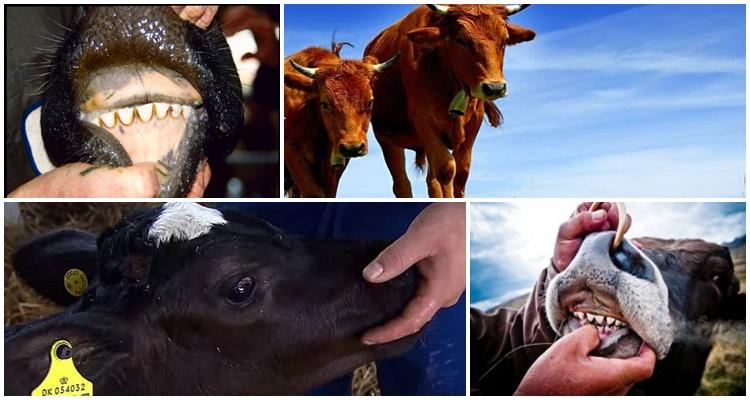
Healing activities
Treatment of emphysematous carbuncle is effective at the first symptoms. The atypical form disappears within two days.
Animals are injected intramuscularly with one of the antibiotics:
- "Penicillin";
- "Biomycin";
- Dibiomycin;
- "Amioxicillin";
- "Cefepim";
- Ceftriaxone.
Solutions for external use:
- "Lizol";
- hydrogen peroxide;
- carbolic acid;
- potassium permanganate.
The dosage of drugs for emphysematous carbuncle is prescribed by a veterinarian.Self-selection of drugs can aggravate the condition of the animal.
Prevention
It is important to recognize the symptoms of emkar early in order to keep the herd alive. Sick cows are transferred to a separate room. The rest of the animals are vaccinated. The farm is being quarantined and disinfected. The planned slaughter is canceled. The bodies of dead animals are burned in cattle burial grounds.
How to avoid an outbreak:
- vaccinate every six months;
- the purchased animals are kept in quarantine for two weeks, separately from the herd;
- disinfect stalls during summer grazing;
- study the area when choosing a pasture, epizootic situation;
- do not graze the herd near cattle burial grounds, in swampy areas;
- examine the skin of cows, monitor the cleanliness of the hooves.
Meat and milk of sick cows are prohibited for sale. Timely vaccination, control over appetite and physical activity of animals will help to avoid the spread of Clostridia and emkar.
